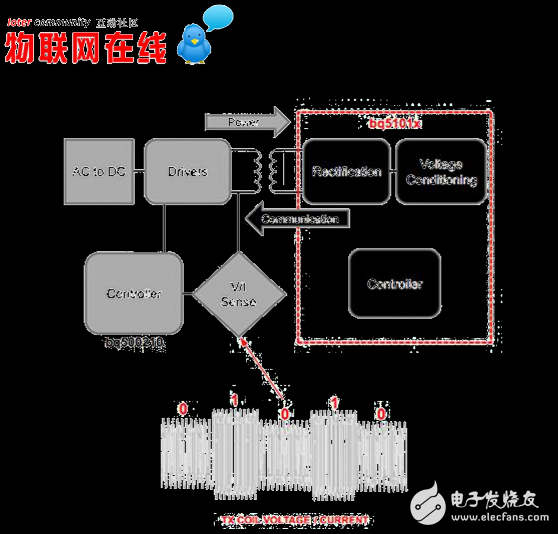資料介紹
采用無線充電給可穿戴設備帶來便利
The wearable device is fast emerging as an important market sector for electronics. A key requirement of these devices is convenience, not just in the ability to access data on the move but to ensure that it has enough battery life to last an entire day, and do so every day.
If a user has to plug a device in to recharge it overnight, there is a high probability they will forget on some occasions and wake up to find the product is unable to remain active for the rest of the day. Wireless charging offers a more convenient way of charging electronic devices. Instead of having to plug a mini-USB or similar cable into the device, it can be placed on a charging mat that the user can keep in an easily accessible location. If the wireless-charging system is designed appropriately, multiple devices can be charged on the same mat, reducing duplication and making it easier for users to take the device and charger when they travel.
Wearables are not the only types of electronic device that can benefit from wireless charging. The technology is already widely used for electric toothbrushes and is even being scaled up to recharge the batteries in electric vehicles.
Inductive charging works on the same basis as a power transformer. An induction coil in the mat creates an alternating electromagnetic field that is picked up by a secondary coil in the device to be charged where it is converted back to a usable electrical current. Like a conventional transformer, basic inductive charging requires close proximity between the coils to provide high efficiency. Otherwise, substantial losses can build up through resistance in the primary coil.
The efficiency of energy transfer over longer distances can be improved through the use of resonant inductive coupling using two coils that are tuned through the combination of inductance and capacitance loading to resonate at the same frequency. This resonance allows significant power to be transmitted from one coil to the other over distances of up to a few times the diameter of the coil.

声明:本文内容及配图由入驻作者撰写或者入驻合作网站授权转载。文章观点仅代表作者本人,不代表电子发烧友网立场。文章及其配图仅供工程师学习之用,如有内容侵权或者其他违规问题,请联系本站处理。 举报投诉
- 可穿戴设备的电针活动应用简介0次下载
- 用于便携可穿戴设备的RX8130CE1次下载
- 2023可穿戴设备行业技术与市场分析38次下载
- 可穿戴设备开源分享4次下载
- 支持Twitch的简单可穿戴设备0次下载
- 如何设计更加小巧、续航能力更强的可穿戴设备1次下载
- 可穿戴设备的设计方向与规范资料下载29次下载
- 可穿戴设备的电源方案探讨资料下载13次下载
- 基于无线充电为可穿戴设备提供标准的设计方案6次下载
- 基于无线模块的可穿戴设备的应用方案3次下载
- 使用无线模块构建可穿戴设备9次下载
- 利用无线电源提高可穿戴设备的便利性10次下载
- 探索可穿戴设备充电的电源解决方案20次下载
- 移动与可穿戴设备的解决方案25次下载
- 开源硬件-TIDA-00761-面向可穿戴设备和 IoT 应用的低功耗电池充电管理 PCB layout 设计0次下载
- 医疗可穿戴设备的设计需求和解决方案4108次阅读
- 可穿戴设备应用程序的实现1237次阅读
- 可穿戴设备的无线充电如何设计解决方案1655次阅读
- 可穿戴设备:满足卓越电源管理的需求1052次阅读
- 可穿戴设备发展历程!医疗可穿戴设备和传感器生态系统正在快速成长!7020次阅读
- 浅析Dialog可穿戴设备解决方案5196次阅读
- 如何设计一种可穿戴设备待机延长的方案1033次阅读
- 关于可穿戴设备市场的调研报告3280次阅读
- MEMS六轴传感器的可穿戴设备电路设计—电路精选(37)4169次阅读
- 可穿戴设备氧传感器电路解析—电路精选(35)4820次阅读
- 使用无线电源,以提高便利性的可穿戴设备985次阅读
- 医疗可穿戴设备:如何打开慢性病困惑的“黑箱”1286次阅读
- 为可穿戴设备提供最理想的充电解决方案1720次阅读
- 简单有效的可穿戴设备ESD静电防护原则3209次阅读
- 为什么可穿戴设备如此流行?1219次阅读
下載排行
本周
- 1TC358743XBG評估板參考手冊
- 1.36 MB | 330次下載 | 免費
- 2開關電源基礎知識
- 5.73 MB | 11次下載 | 免費
- 3100W短波放大電路圖
- 0.05 MB | 4次下載 | 3 積分
- 4嵌入式linux-聊天程序設計
- 0.60 MB | 3次下載 | 免費
- 5DIY動手組裝LED電子顯示屏
- 0.98 MB | 3次下載 | 免費
- 6基于FPGA的C8051F單片機開發板設計
- 0.70 MB | 2次下載 | 免費
- 751單片機PM2.5檢測系統程序
- 0.83 MB | 2次下載 | 免費
- 8基于51單片機的RGB調色燈程序仿真
- 0.86 MB | 2次下載 | 免費
本月
- 1OrCAD10.5下載OrCAD10.5中文版軟件
- 0.00 MB | 234315次下載 | 免費
- 2555集成電路應用800例(新編版)
- 0.00 MB | 33566次下載 | 免費
- 3接口電路圖大全
- 未知 | 30323次下載 | 免費
- 4開關電源設計實例指南
- 未知 | 21549次下載 | 免費
- 5電氣工程師手冊免費下載(新編第二版pdf電子書)
- 0.00 MB | 15349次下載 | 免費
- 6數字電路基礎pdf(下載)
- 未知 | 13750次下載 | 免費
- 7電子制作實例集錦 下載
- 未知 | 8113次下載 | 免費
- 8《LED驅動電路設計》 溫德爾著
- 0.00 MB | 6656次下載 | 免費
總榜
- 1matlab軟件下載入口
- 未知 | 935054次下載 | 免費
- 2protel99se軟件下載(可英文版轉中文版)
- 78.1 MB | 537797次下載 | 免費
- 3MATLAB 7.1 下載 (含軟件介紹)
- 未知 | 420027次下載 | 免費
- 4OrCAD10.5下載OrCAD10.5中文版軟件
- 0.00 MB | 234315次下載 | 免費
- 5Altium DXP2002下載入口
- 未知 | 233046次下載 | 免費
- 6電路仿真軟件multisim 10.0免費下載
- 340992 | 191186次下載 | 免費
- 7十天學會AVR單片機與C語言視頻教程 下載
- 158M | 183279次下載 | 免費
- 8proe5.0野火版下載(中文版免費下載)
- 未知 | 138040次下載 | 免費
 電子發燒友App
電子發燒友App


















 創作
創作 發文章
發文章 發帖
發帖  提問
提問  發資料
發資料 發視頻
發視頻 上傳資料賺積分
上傳資料賺積分









評論